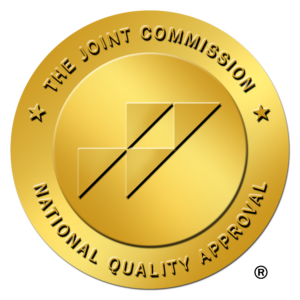Anxiety’s Grip on the Workplace Why It’s Rising and How to Find Relief
Anxiety’s Grip on the Workplace Why It’s Rising and How to Find Relief
In today’s fast-paced, always-on world, anxiety is on the rise within the American workforce. While always present to some degree, we’re seeing a significant increase in the number of people struggling with anxiety disorders, and this trend is having profound consequences in the workplace. Let’s delve into the reasons behind this surge, address the reality of anxiety as a legitimate medical condition, and explore strategies for coping and reducing its impact on the workplace.
Here’s a deeper look into some of the key contributors:
- The Modern Workplace: Increased job demands, long hours, and the blurring of lines between work and personal life due to technology contribute to chronic stress.
- Economic Uncertainty: Financial worries, job insecurity, and the rising cost of living create a constant undercurrent of anxiety.
- Social Isolation and Pressure: Social media can promote unrealistic expectations and feelings of inadequacy, while loneliness resulting from less in-person interaction exacerbates anxiety.
- Unhealthy Lifestyles: Poor sleep, lack of exercise, and reliance on processed foods impact mental well-being.
- Increased Awareness and Reduced Stigma: While mental health stigma still exists, more open discussions are leading to increased diagnosis and recognition of anxiety disorders.
Anxiety: It’s Real, and It Has Real Consequences
Anxiety is not a character flaw or a sign of weakness. It’s a complex mental health condition with real physical and emotional symptoms. Dismissing it with phrases like “just relax” or “toughen up” is not only insensitive but also harmful. For those struggling, anxiety can feel overwhelming and impact all areas of life, including work performance, relationships, and physical health.
Understanding the Rise in Anxiety
Why the increase in anxiety? Several factors contribute to this escalating issue. The current state of affairs is deeply concerning: a report by the Anxiety and Depression Association of America (ADAA) indicates that anxiety disorders are the most common mental illness in the U.S., affecting 40 million adults (18.1% of the population) every year.
The Taboo of Mental Health and the Reluctance to Seek Help
Despite progress, mental health can still be a difficult subject for many. A lingering stigma persists, making those struggling with anxiety feel ashamed or weak. Some worry about being labeled or judged differently, impacting job prospects or relationships.
There’s also a misconception that mental health issues are a character flaw, rather than treatable medical conditions. The belief that one should simply “snap out of it” reveals a deep lack of understanding about how anxiety disorders function. Additionally, limited access to affordable mental healthcare, inadequate insurance coverage, or a lack of support within workplaces are major barriers to seeking the help needed.
Here’s why seeking help is often challenging:
Stigma: Fear of judgment or being perceived as incapable at work prevents people from being open about their struggles.
Lack of Understanding: Some underestimate the real impact of anxiety, assuming it can be overcome through sheer willpower.
Access to Resources: Limited access to affordable mental healthcare and a lack of support within workplaces are major barriers.
“”We can’t eliminate stress from the workplace, but we should eliminate the stigma surrounding treatment”
“”We can’t eliminate stress from the workplace, but we should eliminate the stigma surrounding treatment”
– Lori Gottlieb
Psychotherapist and Author
The Importance of Getting Help
Seeking help for anxiety is not a sign of failure; it’s a step towards taking control of your well-being. With treatment, such as therapy, medication (in some cases), and healthy coping techniques, most people can learn to manage their anxiety and thrive.
Occupations with Higher Rates of Anxiety
Certain jobs have an inherently higher risk for anxiety:
Healthcare Workers: Witnessing suffering, the pressure of life-or-death decisions, and emotionally draining work put healthcare workers at increased risk.
Teachers: Demanding workloads, pressure to meet standards, and challenging student behaviors create high anxiety levels in this profession.
First Responders: The unpredictable nature of emergencies, constant exposure to danger, and potential for trauma contribute to frequent instances of anxiety among first responders.
How Employers Can Help Reduce Anxiety Rates
Employers have a vested interest in addressing workplace anxiety. It’s not just about kindness; it’s about a healthy bottom line. Studies show that anxiety disorders cost the U.S. economy over $42 billion each year in lost productivity, healthcare costs, and absenteeism.
Conversely, investing in mental well-being leads to:
Reduced Healthcare Costs
Addressing anxiety can help reduce the physical health problems it often exacerbates, lowering costs for employers long-term.
Improved Productivity and Focus
Employees who are mentally well perform better, are more engaged, and have better concentration.
Increased Retention
Supportive work environments reduce burnout and turnover, saving on the costs of recruitment and training.
Attracting Talent
Companies with strong mental health support become more desirable to top talent in a competitive market.
Enhanced Reputation
Investing in employee well-being boosts a company’s reputation as a responsible and caring employer.
Here’s how employers can take action:
- Insurance coverage: Inquire about your insurance coverage and network restrictions to determine the financial feasibility of different options.
- Program focus and philosophy: Explore the program’s treatment approach, therapeutic modalities offered, and staff qualifications to ensure alignment with your needs and preferences.
- Location and amenities: Consider the facility’s accessibility, comfort level, and available amenities to optimize your experience and well-being during your stay.
Taking Action and Finding Support
If you’re struggling with anxiety in the workplace, know that you’re not alone. Here’s how to start making steps towards managing it:
Talking to Your Employer:
While approaching your boss about anxiety can feel daunting, it could open the door to support. Be clear about how anxiety affects your work and explore potential solutions together (e.g., flexible hours, workload adjustments). Don’t be afraid to advocate for yourself.
Seeking Professional Help:
Therapists specialize in treating anxiety disorders, offering effective coping strategies and techniques based on your specific needs. If your employer doesn’t offer mental health benefits, explore community resources or online therapy options.
Strategies for Managing Workplace Anxiety:
Alongside professional help, you can incorporate practices like mindfulness exercises, breaks for relaxation techniques, and prioritizing healthy habits to reduce anxiety throughout the workday.
The Value of Teamwork:
Remember, communication and collaboration are essential. Be open with trusted colleagues when you may need extra support and let your manager know how they can best support your well-being.
Verify Your Coverage Here
Moving Forward
Anxiety doesn’t have to define your career. With treatment, self-care, and potential workplace accommodations, you can manage your anxiety and thrive in your role. By working together, employers and employees can create a workplace culture where mental health is prioritized, leading to a happier, healthier, and more productive workforce for everyone.
"*" indicates required fields







